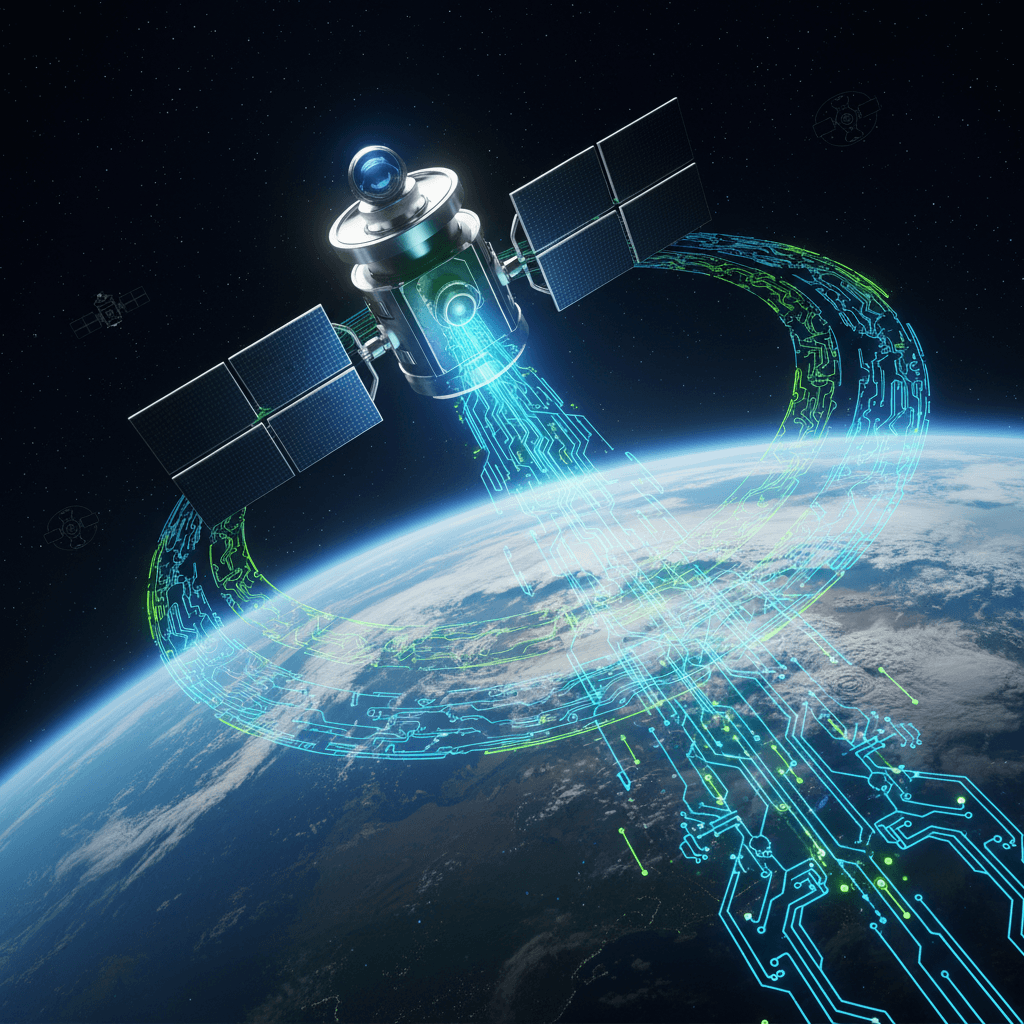GalaxEye Finalizes Launch of World's First AI-Driven Multi-Sensor Satellite
India's GalaxEye launches world's first multi-sensor satellite, delivering all-weather, AI-powered global intelligence.
October 13, 2025

Bengaluru-based space-tech startup GalaxEye has finalized the launch window for its inaugural satellite, 'Mission Drishti', scheduling it for the first quarter of 2026.[1][2][3][4][5][6][7] This launch represents a significant milestone for India's private space sector, as Mission Drishti is poised to be the world's first multi-sensor Earth observation satellite.[4][8][6][7] The mission will serve as the vanguard for a planned constellation of satellites designed to provide near-real-time, all-weather global imaging. The data gathered is expected to have profound implications for a multitude of sectors, including defense, agriculture, and disaster management, by leveraging artificial intelligence to transform high-resolution imagery into actionable intelligence. Founded in 2021 by a team of engineers from IIT Madras, GalaxEye aims to overcome the long-standing compromises in satellite imaging, positioning India at the forefront of the rapidly evolving Earth observation market.[9][10][11] The successful deployment of Mission Drishti will not only validate the company's innovative technology but also mark the beginning of a new era in geospatial data services.
The technological core of Mission Drishti is a groundbreaking proprietary system that fuses data from multiple sensors on a single platform.[1] Weighing 160 kilograms, the satellite is set to be India's largest and highest-resolution privately built satellite to date.[1][12][3][8][5][6][7] It uniquely combines a Synthetic Aperture Radar (SAR) with high-resolution optical sensors, a technology GalaxEye has termed SyncFused Opto-SAR.[1][3] This innovation directly addresses the primary limitations of existing Earth observation technologies.[10] While traditional optical satellites provide clear, intuitive images, they are rendered ineffective by clouds, adverse weather, or darkness.[10] Conversely, SAR can penetrate these obstacles to provide consistent data but often produces images that are complex and difficult for non-experts to interpret.[10] By integrating both systems, Mission Drishti can capture high-precision imagery with a 1.5-meter resolution, day or night, regardless of weather conditions.[1][4][8][13] This "all-weather, all-time" capability ensures a constant and reliable stream of data.[1] The satellite's structural model has already proven its resilience for the harsh environment of space by successfully undergoing rigorous testing at ISRO's U R Rao Satellite Centre.[1][5][6]
The launch of the first Drishti satellite is the foundational step in a much larger strategic vision for GalaxEye. The company plans to establish a comprehensive constellation of 8 to 12 satellites, with successive launches planned through 2029.[1][3][6][7] The ultimate objective of this multi-satellite network is to achieve near-real-time global imaging coverage. Such a capability would dramatically reduce the latency between data acquisition and delivery, enabling users to monitor changes on the Earth's surface with unprecedented frequency. This rapid revisit rate is critical for applications requiring timely information, such as tracking the progression of natural disasters, monitoring agricultural health throughout a growing season, or maintaining surveillance over critical infrastructure and borders. GalaxEye is operating on a Data-as-a-Service model, intending to provide these valuable datasets to both government and commercial clients.[14][15] The development of this constellation is supported by significant financial backing, with the company having raised approximately $14-15 million from a consortium of investors that includes Infosys, Speciale Invest, Mela Ventures, and Mounttech Growth Fund Kavachh.[9][16][14][17][18]
The true transformative potential of the data from Mission Drishti and the subsequent constellation lies in its fusion with artificial intelligence. The satellite system is engineered to be "AI-ready," delivering fused, analysis-ready imagery that can be seamlessly ingested by machine learning algorithms.[10] GalaxEye has emphasized its focus on moving beyond simply selling raw data to providing unparalleled "imagery intelligence" infused with AI.[6][13] This approach will enable the automated detection of patterns, changes, and anomalies across vast datasets that would be impossible for humans to analyze manually. For the defense and security sectors, this means enhanced border surveillance and more effective monitoring.[1] In disaster management, AI algorithms can rapidly assess flood damage or identify passable routes for emergency responders from the all-weather imagery.[13] The technology will also empower the agriculture, finance, and insurance industries with real-time environmental and structural insights for more accurate risk assessment and decision-making.[1][4][8][5][13][7] The company's geospatial platform, GalaxEye Blue, already demonstrates this capability by using AI to combine satellite imagery for aquaculture market insights.[15]
In conclusion, GalaxEye's finalized plan to launch Mission Drishti in early 2026 marks a pivotal moment for the global space and AI industries. By pioneering the world's first multi-sensor satellite that combines optical and SAR data, the company is set to eliminate the persistent problem of intermittent visibility in Earth observation. This technological leap, combined with a clear strategy for a near-real-time satellite constellation and a deep integration of artificial intelligence, promises to unlock a new era of actionable geospatial intelligence. The mission is poised to provide critical, uninterrupted data streams to governments and industries, transforming decision-making in sectors from national security to financial services. Bolstered by strong investor confidence and strategic partnerships for launch and data distribution, GalaxEye is not just launching a satellite; it is launching a new paradigm in how we see and understand our planet, firmly placing India on the map as a leader in commercial space technology innovation.[13]
Sources
[5]
[7]
[9]
[10]
[11]
[12]
[13]
[14]
[15]
[16]
[17]
[18]